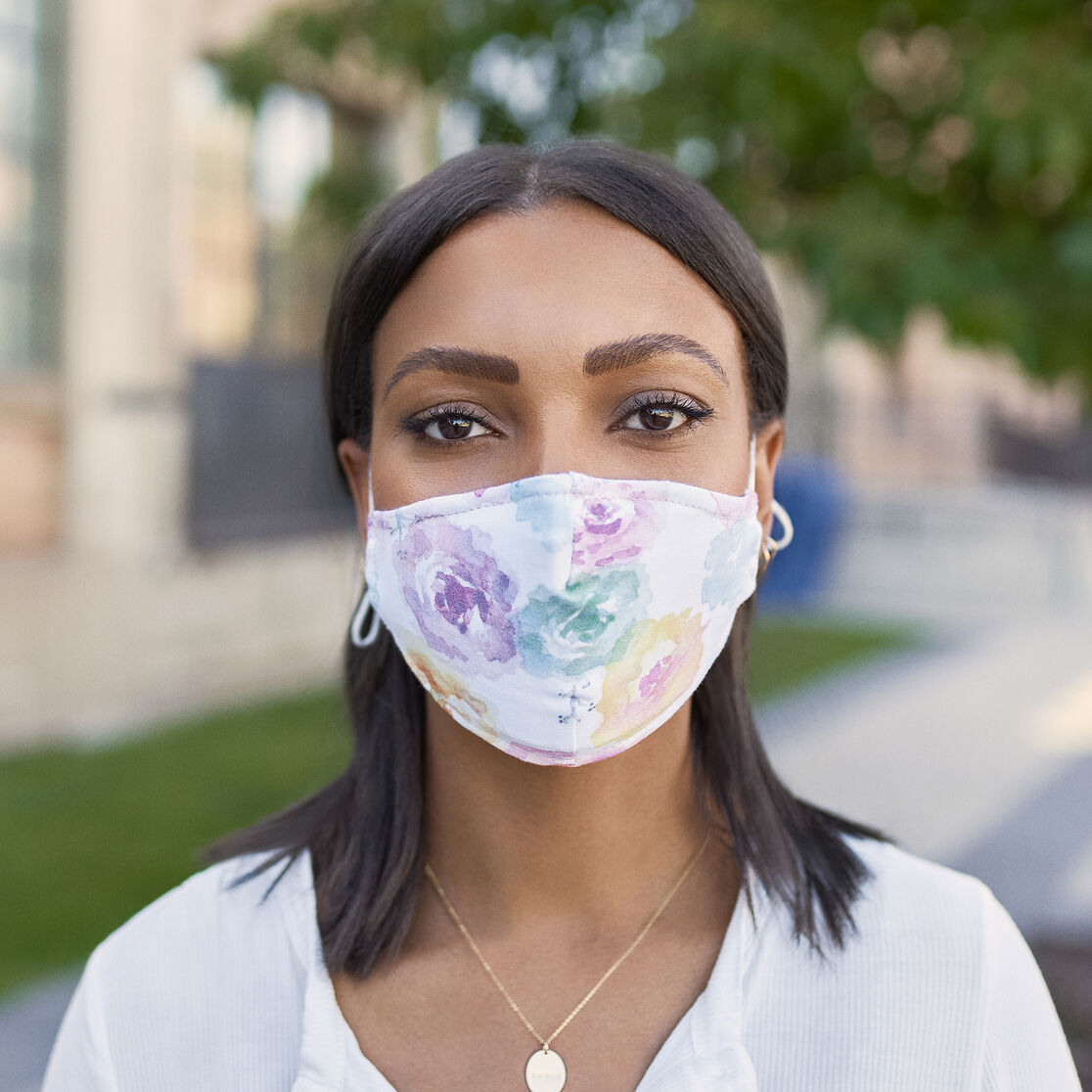Wondering how to wash and wear face masks? Find the answers here
This time last year, the only face masks most of us were using regularly were sheet masks and clay masks to clear clogged pores and prevent breakouts. But now times have changed (thanks a lot, coronavirus), and reusable cloth face masks and disposable masks have become must-haves for all of us as a way to prevent the spread of germs.
While we may have never thought we’d walk around with multiple face masks in our purse (the handful of lip balms in there are feeling crowded), it’s our new reality. But you may still have questions about how to wear and care for your cloth face mask or disposable mask. Keep reading for answers.
Answering everyone’s burning question. Can you wear a face mask every day?
Google keeps seeing certain questions about face coverings, including “Can I wear my face mask every day?” and “How often should you use face masks?” If you have these questions too, you aren’t alone.
The answer to the first question is yes. Despite what social media users may say (we mean you, Aunt Karen), face coverings don’t reduce your oxygen intake. They also don’t cause carbon dioxide poisoning. This means it’s perfectly safe to wear a cloth mask every day.
As for how often you should be wearing your mask to prevent the spread of germs, the CDC offers us some guidance. Basically, you should be masking up any time you’re in a public setting and around people who aren’t in your household. This is especially true if you can’t maintain that precious six feet of social distance from others.
They might be safe to wear every day, but are face masks good for your skin?
Face masks are good at protecting you and others from illnesses like coronavirus. But are they good for your skin?
If you’ve noticed more blackheads and breakouts since you started regularly wearing a mask, you probably know that cloth face masks aren’t as good for your skin as the masks in your skincare routine.
This so-called maskne (a clever name for an annoying problem) occurs because disposable and reusable face masks can rub against the skin. This causes sweat, oil, and makeup to build up, leading to clogged pores and pimples. Breathing inside your reusable face mask also creates a humid environment, which allows maskne to flourish.
Before you decide that wearing a mask isn’t worth it, know that you can take steps to protect your skin while you’re protecting against coronavirus.
First of all, opt for light or no makeup on the days when you’ll be wearing a mask. Having less foundation and powder on your skin means that there’s less of it that can be rubbed into your pores.
Second, think about your skincare routine. Your instinct may be to cleanse and scrub to prevent face mask acne but overdoing it can actually do more harm than good. Over-washing can breakdown your skin’s precious protective barrier, which can lead to everything from dryness to pimples for any skin type.
Finally, make sure you’re washing and wearing your cloth mask properly. Being an expert in mask maintenance and usage is one of the best ways to keep your skin clear and everyone healthy.
So, how do you wash and wear a face mask?
Now that you know wearing a mask is safe and you can protect your skin from maskne, you’re probably wondering how to become a mask-wearing pro.
Let’s start with how to wear a face mask. Before you do anything, make sure you wash your hands for 20 seconds or use Hand Sanitizer (yes, hand-washing and mask-wearing are better friends than Martha Stewart and Snoop Dogg).
Once your mask is on, make sure it covers both your mouth and your nose. Also, try to avoid touching your mask and your face while you’re out and about. We know sometimes you just have to scratch that itch on your nose. Just be sure to wash or sanitize first.
After you finish wearing your mask, be sure to remove it (with clean hands) by touching the strings behind your head or the ear loops. Then fold your mask so the insides touch each other and place it in a clean plastic bag.
Speaking of clean, you’ll want to make sure you’re washing your makeup masks. To keep your skin happy, you should be washing it after every day you wear it. Use gentle, fragrance-free laundry detergent. The CDC recommends washing your mask in your washing machine, but handwashing it is also an option.
When it comes time to dry your mask, you can put it in the dryer on the highest heat setting (assuming there aren’t any pieces that could melt). You can also place it on a drying rack in the sunlight.
You’re now a face mask expert
A little bit of knowledge can make all the difference, especially when you’re adjusting to life with a face mask. Now mask up, get out there and (safely) enjoy the world, while minimizing your skin concern.
We aim to provide you with the most honest and credible information possible. This article was reviewed for accuracy by The Honest Team and was written based on sources that are linked at the bottom of the article.
blog_review_statement



